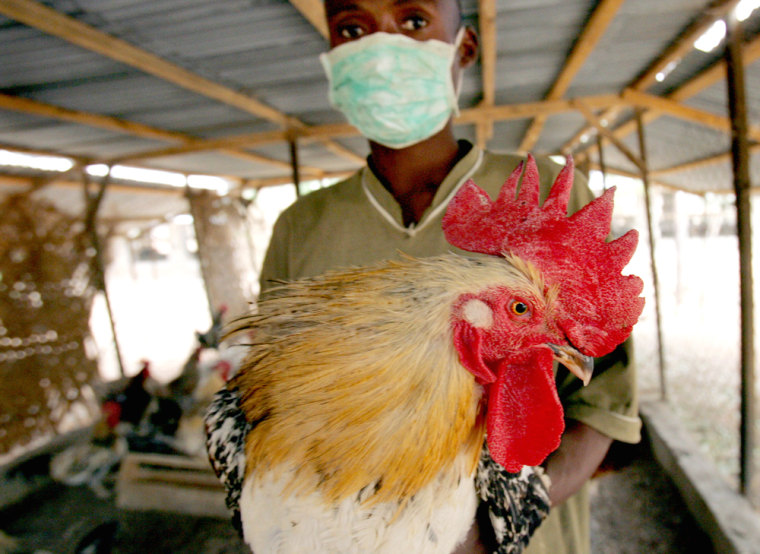If a worldwide flu epidemic strikes, don’t reuse a face mask — and don’t assume, either, that it will offer a lot of protection, the Institute of Medicine said Thursday.
That’s the bottom line from an anxiously awaited probe requested by the government as it stockpiles supplies in case a flu pandemic begins.
If it does, millions undoubtedly will turn to masks, raising a dilemma for the prestigious scientific organization: There’s little evidence about whether masks truly block the influenza virus — and if they can, just how much protection they offer.
Without that information, wearing masks might spur a false sense of security, perhaps encouraging people to go into crowds or near infected patients when instead they should have stayed away.
“We don’t want to say, 'Don’t use it,' but don’t expect to be fully protected if you do use it. That’s a tough public health message to get out,” said Dr. Donald Burke, a professor of international health at Johns Hopkins University who co-chaired the IOM panel.
'Last resort'
Hence, “respiratory protection is the last resort to control infectious spread,” the report notes.
Health workers use masks — simple surgical masks or better-filtering ones called N95 respirators — to keep from breathing their own germs onto vulnerable patients, and to protect themselves from specific respiratory diseases, such as tuberculosis.
The masks are supposed to be used once and discarded. Anticipating a staggering demand if the bird flu or some other super-strain of influenza sparks a pandemic, the Department of Health and Human Services asked if such masks could be reused, to conserve supplies.
No, the IOM report concludes.
“We’re not surprised,” said William Raub, who oversees emergency preparedness at HHS, which has placed an initial order of 150 million masks for a national stockpile.
“While masks have a role to play, we must discourage people from an undue reliance on them,” he added.
The report shows the government should buy more, said Jeff Levi of the advocacy group Trust for America’s Health. Much smaller France, he said, has ordered 200 million N95 masks.
Raub said officials would reconsider federal stockpile levels once the initial order was in, but that hospitals and state officials should be stockpiling their own masks, too.
The bigger question is one the government didn’t ask: If different masks really block influenza, the IOM panel noted, calling for urgent study of that issue.
Flu can spread three ways:
- By hand. Someone sneezes into his hand and then grabs a doorknob that you touch, or shakes your hand.
- By large droplets of virus, if someone is in the direct path of a sneeze or cough. Those heavy droplets fall quickly to the ground.
- By tiny particles, which can stay suspended in the air for far longer periods.
No one knows which of those methods is most important.
But, the IOM said, surgical masks aren’t designed to block tiny airborne particles, just larger ones. Thus, they probably would be of most use when worn by infected patients, to help cover coughs and sneezes.
One size doesn't fit all
While the N95 respirators haven’t been tested to see how effectively they block flu virus specifically, they are designed to block small particles and would be a logical choice for health workers. But N95s must be individually fitted to users’ faces so that air doesn’t seep into the sides, a problem for men with facial hair. Also, they come only in certain sizes, with none for children, and they’re uncomfortable to breathe in for long periods.
Regardless, if someone with flu sneezes on any mask wearer, the outside is contaminated, so users must remove them carefully to avoid infecting themselves, the IOM panel stressed.
More expensive reusable masks do exist, but there is no good way to decontaminate and reuse surgical masks and standard disposable N95s, the panel concluded.
It listed one exception: Someone could reuse his or her own N95 if the outside were protected from surface exposure, such as by placing a disposable surgical mask over it, stored it carefully to avoid creases or damage, and the user thoroughly washed hands before and after removal and rechecked the fit with each wearing.
What about using a handkerchief or some other improvised mask? They’re not likely as protective as even a surgical mask might be, but the panel hesitated to discourage use — assuming that some protection would be better than none. Generally, the tighter the fabric weave, the better.
